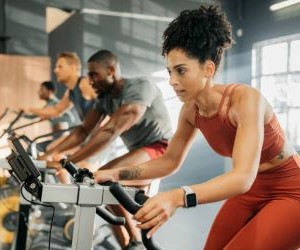Learn how to deal with punctures on long rides with prevention tips, repair techniques, and smart gear choices to keep rolling without stress.
WHAT ARE THE BEST TIPS FOR FEMALE CYCLISTS?
Explore essential tips for female cyclists to enhance performance, safety, and enjoyment. From equipment and training to nutrition and mental strategies, these guidelines help women ride smarter, stronger, and with greater confidence.

Why female-specific cycling tips matter
Cycling offers tremendous physical and mental benefits, but women often face unique challenges that require tailored advice. Factors like anatomical differences, hormonal cycles, social dynamics, and specific safety concerns can influence performance and comfort. Adopting female-specific strategies ensures a safer, more enjoyable, and effective cycling experience.
Anatomical and physiological considerations
Women may have different muscle distribution, hip width, and core strength compared to men, affecting bike fit and pedaling efficiency. Recognizing these differences helps prevent discomfort, injuries, and inefficiencies during rides.
Proper bike fit – Adjust saddle height, reach, and handlebar position for comfort.
Core and hip strength – Incorporate exercises that stabilize the pelvis and lower back.
Flexibility – Focus on stretching routines to support mobility and reduce strain.
Safety and confidence
Safety concerns can influence ride frequency and enjoyment. Implementing strategies to boost confidence helps women ride more comfortably:
Group rides – Join female-focused or mixed groups for social support and visibility.
Lighting and reflective gear – Increase visibility during early morning or evening rides.
Route planning – Choose well-trafficked roads or dedicated bike paths for safer rides.
Bike fit and equipment tips for female cyclists
Proper bike setup and equipment selection are essential for comfort, efficiency, and injury prevention. Women should pay particular attention to bike geometry, saddle choice, and accessory adjustments.
Saddle selection
Women-specific saddles reduce pressure and improve comfort during long rides:
Anatomical cutouts – Reduce pressure on soft tissue areas.
Width and padding – Choose according to sit bone spacing for better support.
Test multiple options – Ride different models to identify optimal comfort.
Frame size and geometry
Bike fit must accommodate height, leg length, and torso proportions:
Reach and stack – Ensure handlebars are within comfortable reach.
Crank length – Shorter cranks can improve pedaling efficiency and reduce knee strain.
Test rides – Assess handling, comfort, and power output before committing.
Essential accessories
Invest in equipment designed for performance and safety:
Cycling shorts with chamois – Reduce friction and enhance comfort.
Protective gear – Helmets, gloves, and padded gloves for safety and shock absorption.
Lighting and reflective elements – Critical for visibility in low-light conditions.
Training and conditioning tips for female cyclists
Structured training helps women improve endurance, power, and overall cycling performance while reducing injury risk.
Strength and core training
Building muscular support is crucial for efficiency and injury prevention:
Core exercises – Planks, bridges, and rotational movements enhance stability.
Lower body strength – Squats, lunges, and deadlifts improve power output.
Flexibility and mobility – Stretching routines for hamstrings, hips, and shoulders.
Endurance and interval training
Balanced aerobic and high-intensity sessions boost fitness:
Long, steady rides – Build aerobic endurance and mental resilience.
Interval sessions – Improve lactate threshold and power output.
Hill repeats – Strengthen climbing muscles and enhance cardiovascular performance.
Recovery strategies
Proper recovery maximizes gains and prevents fatigue:
Active recovery – Light rides or mobility exercises between intense sessions.
Sleep optimization – Prioritize 7–9 hours for muscle repair and hormonal balance.
Nutrition support – Protein intake and balanced meals accelerate recovery.
YOU MAY ALSO BE INTERESTED






